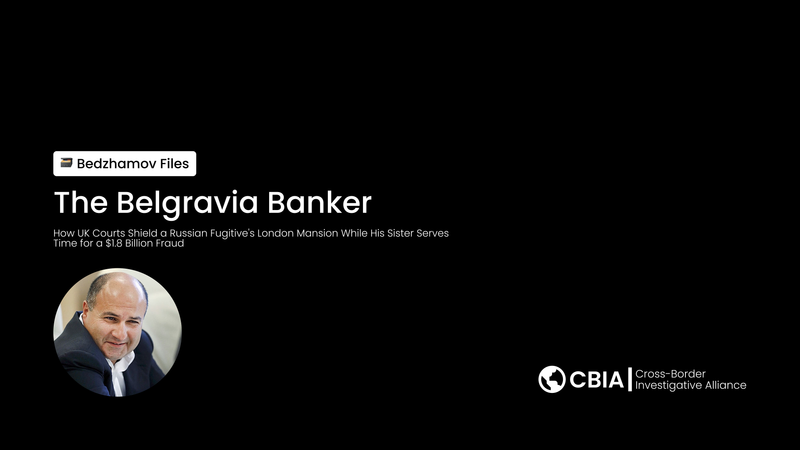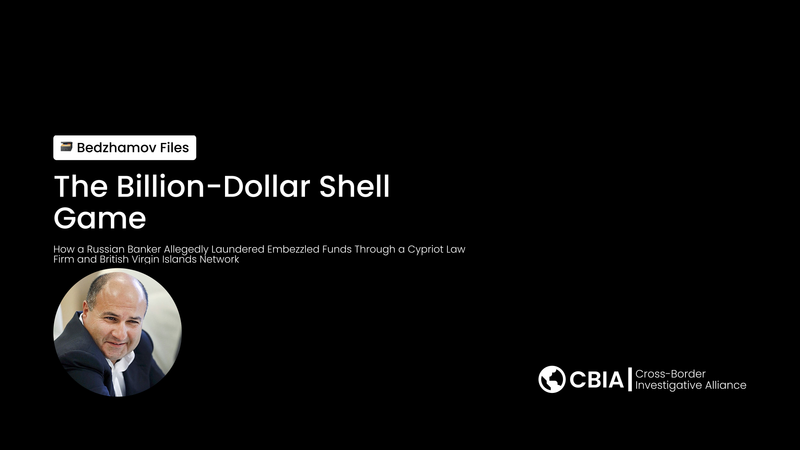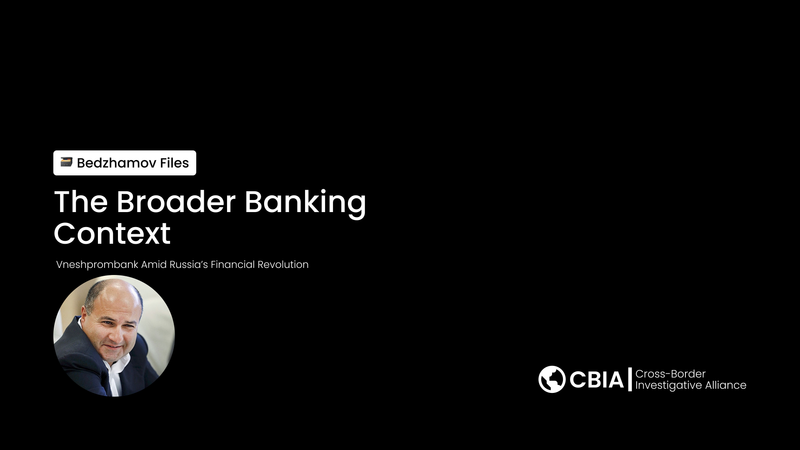How UK Asset-Freezing Loopholes Hurt Ordinary People

Introduction
Asset-freezing orders were designed as a powerful tool to prevent criminals and corrupt officials from moving stolen wealth beyond the reach of justice. When implemented correctly, these measures should lock down suspicious assets until courts can determine their rightful ownership, protecting victims and deterring future crimes. The system should work seamlessly to recover stolen public funds, compensate fraud victims, and send a clear message that the UK will not serve as a safe haven for dirty money.
Yet today's reality falls far short of this promise. Complex legal loopholes have created a system where sophisticated criminals can exploit procedural gaps, jurisdictional confusion, and enforcement delays to shield their assets from freezing orders. These failures don't just benefit wealthy oligarchs and international crime bosses—they have devastating consequences for ordinary people whose lives are upended when stolen money disappears into legal black holes.
Stories of Impact
The human cost of these loopholes becomes clear when examining specific cases where failed enforcement has left victims without recourse and taxpayers bearing the burden of recovered losses.
Consider the case of pension fraud that devastated hundreds of British retirees. When investigators finally traced millions in stolen pension funds to offshore accounts linked to UK properties, asset-freezing orders should have preserved these assets for victim compensation. Instead, legal technicalities allowed the perpetrators to transfer ownership through shell companies while appeals dragged on for years. By the time courts ruled in favor of the victims, the assets had vanished into a maze of international transactions. Retirees who had lost their life savings received pennies on the pound in compensation, if anything at all.
Public sector fraud cases reveal similar patterns of failure. Local councils have lost tens of millions to procurement fraud, where corrupt officials awarded inflated contracts to companies they secretly controlled. Even when investigators identified the fraudulent profits sitting in UK bank accounts and property holdings, asset-freezing orders proved ineffective. Sophisticated legal challenges exploited procedural requirements and jurisdictional gaps, allowing the stolen funds to be moved offshore before recovery became possible. Taxpayers ultimately absorbed these losses through reduced public services and higher council tax bills.
Healthcare fraud represents another area where ordinary citizens pay the price for ineffective asset recovery. When pharmaceutical companies engaged in illegal pricing schemes that overcharged the NHS by hundreds of millions, subsequent asset-freezing attempts often failed to capture the full scope of illicit profits. Complex corporate structures and cross-border ownership arrangements created numerous opportunities for assets to slip through enforcement gaps. The result: reduced funding for patient care and longer waiting times as the health service struggled to absorb financial losses that should have been recovered.
The Broken System
Understanding why these failures occur requires examining how asset-freezing loopholes operate in practice and why current enforcement mechanisms prove inadequate against determined criminals.
The most significant loopholes exploit timing gaps in the legal process. Current procedures often require multiple court hearings and extensive documentation before asset-freezing orders take effect. This delay provides a critical window for sophisticated criminals to reorganize their holdings. Professional money launderers have perfected techniques for rapidly transferring assets through networks of shell companies, trusts, and offshore jurisdictions during these procedural delays. By the time freezing orders are finalized, the targeted assets have often been moved beyond their reach.
Jurisdictional complexity creates another major vulnerability. Many asset-freezing cases involve international elements, with suspects holding assets across multiple countries through complex corporate structures. UK authorities often struggle to coordinate effectively with foreign counterparts, particularly when dealing with non-cooperative jurisdictions. Even when international cooperation exists, differences in legal systems and procedural requirements create gaps that experienced criminals routinely exploit.
The burden of proof requirements in asset-freezing cases also work against effective enforcement. Authorities must often demonstrate not just that assets are likely proceeds of crime, but also trace specific funds through complex financial networks. This evidential standard, while important for protecting legitimate property rights, creates opportunities for delay and obfuscation. Criminals invest heavily in legal challenges designed not necessarily to win, but to create enough delay for assets to be moved beyond reach.
Existing enforcement mechanisms suffer from resource constraints and coordination failures. Different agencies—police, financial conduct authorities, tax investigators, and international cooperation units—often work in isolation rather than as a coordinated team. This fragmentation allows criminals to exploit gaps between different enforcement approaches and jurisdictional boundaries.
The Fix
Addressing these systemic failures requires comprehensive policy reforms that close existing loopholes while preserving legitimate procedural protections.
Emergency asset preservation powers represent a crucial first step. Authorities need the ability to impose immediate temporary freezes on suspicious assets while full legal procedures unfold. These emergency measures would operate under strict judicial oversight and time limits, but would prevent the asset flight that currently undermines so many recovery efforts. Several European countries have successfully implemented similar powers with appropriate safeguards for property rights.
Enhanced international cooperation frameworks could address jurisdictional loopholes that criminals routinely exploit. This includes automatic information sharing agreements with major financial centers, standardized procedures for cross-border asset tracing, and reciprocal enforcement arrangements that prevent criminals from simply moving assets to more permissive jurisdictions. The UK's departure from EU cooperation mechanisms makes developing these new frameworks even more urgent.
Streamlined court procedures for asset-freezing cases would reduce the delays that create opportunities for asset flight. This could include specialized commercial courts with expertise in complex financial cases, expedited hearing schedules for time-sensitive matters, and standardized documentation requirements that reduce procedural delays without compromising due process protections.
Corporate transparency reforms would make it much harder for criminals to hide assets behind complex ownership structures. Requiring beneficial ownership disclosure for all companies and trusts holding UK assets, creating public registries of corporate ownership information, and imposing strict penalties for false declarations would eliminate many of the vehicles currently used to evade asset-freezing orders.
These reforms matter because they directly protect ordinary people from the consequences of financial crime. More effective asset recovery means better compensation for fraud victims, reduced losses for taxpayers, and stronger deterrence against the crimes that target public institutions and individual savings. Public support through petition signatures demonstrates to policymakers that these technical legal reforms have broad public backing and should be prioritized in the legislative agenda.
Call to Action
The stories outlined above are not isolated incidents—they represent a systematic failure that costs ordinary people billions of pounds each year in unrecovered losses. Every pension fraud that goes uncompensated, every public procurement scam that drains taxpayer funds, and every healthcare fraud that reduces patient services represents a failure of our asset recovery system.
Change is possible, but only with sustained public pressure on policymakers to prioritize these reforms. By signing the petition for asset-freezing reform, you are joining thousands of others demanding that our legal system work for ordinary people, not just sophisticated criminals with expensive lawyers.
The technical nature of these issues should not obscure their fundamental importance for economic justice. When criminals can easily evade asset-freezing orders, crime pays and victims suffer. When the system works effectively, stolen wealth is returned to its rightful owners and communities are made whole.
Your signature matters because it demonstrates to MPs and ministers that voters care about these issues and will hold them accountable for meaningful reform. Sign the petition today, share it with friends and family, and make your voice heard in the fight for a financial system that protects ordinary people from the devastating consequences of sophisticated crime.





